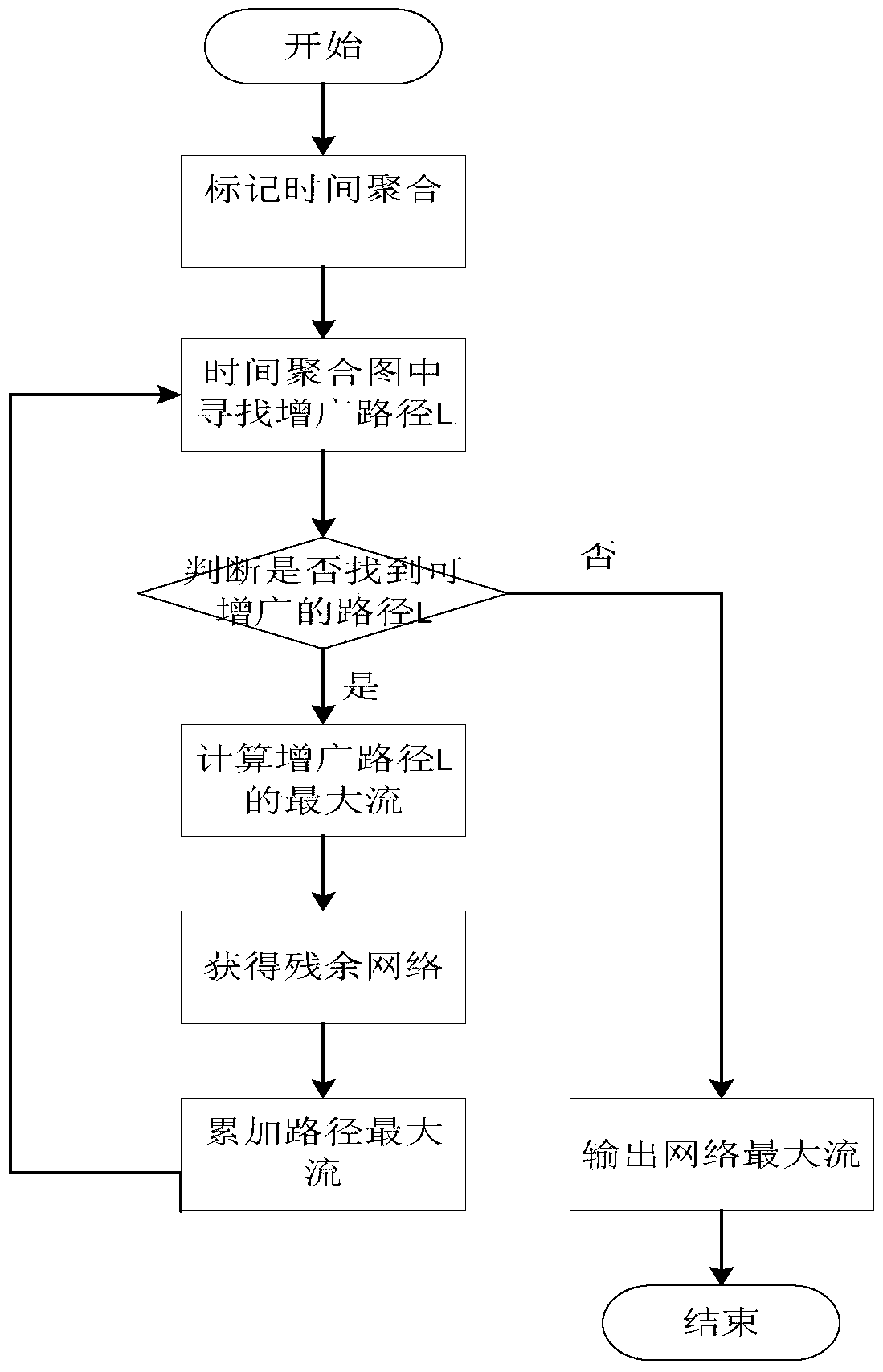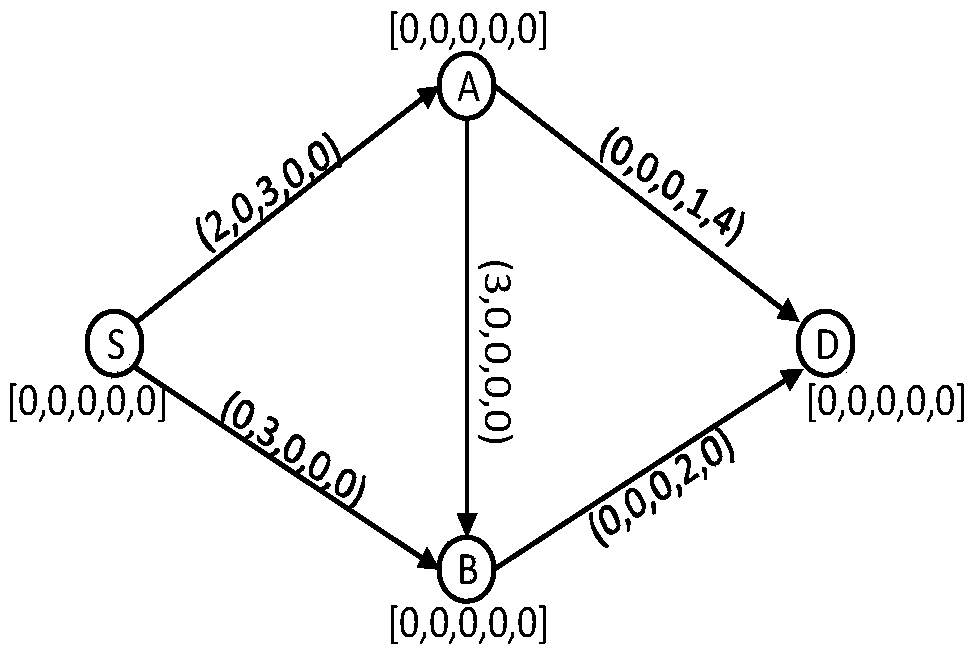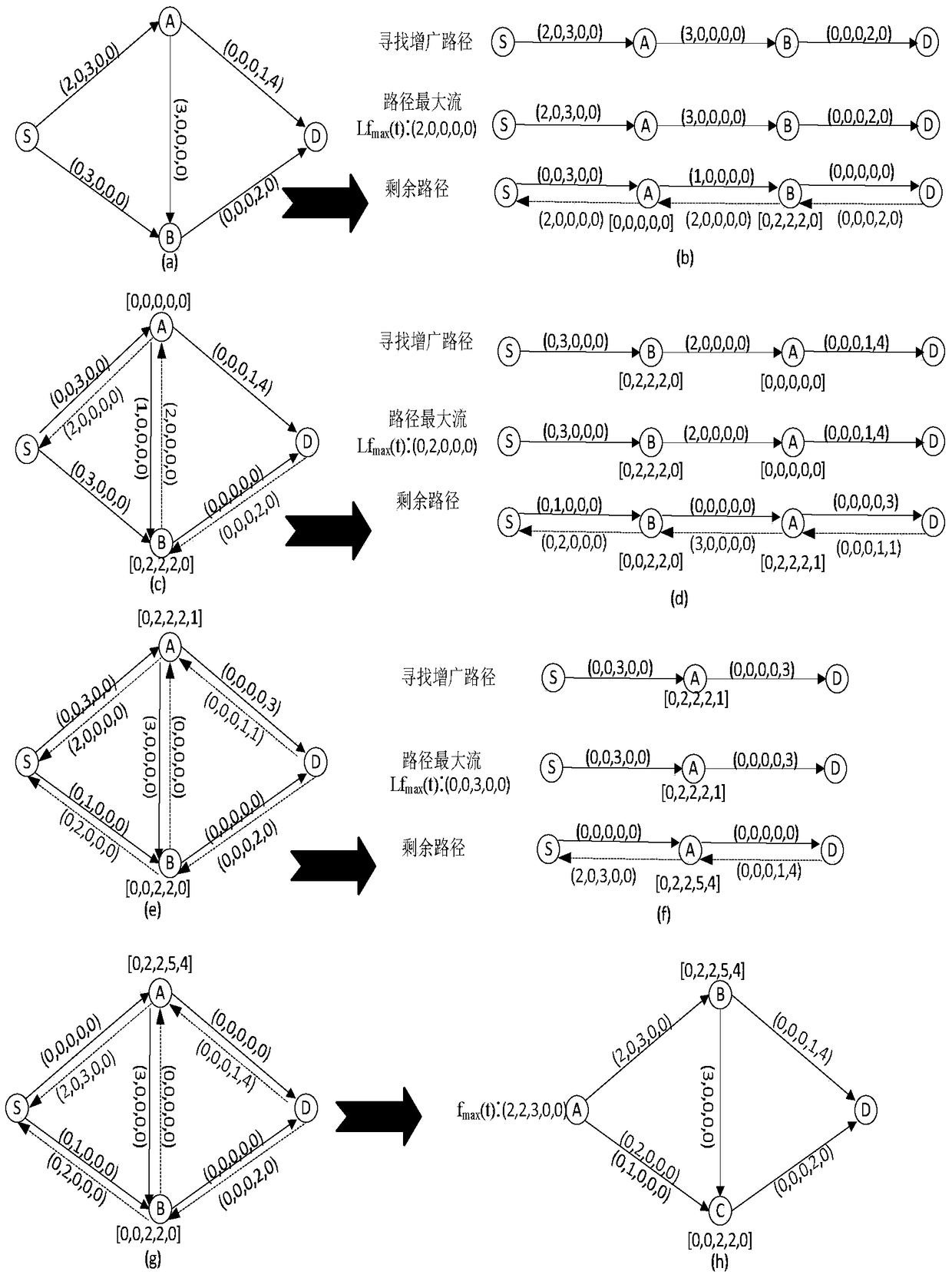A Maximum Flow Routing Method for Delay Tolerant Networks Based on Time Aggregation Graph
A delay-tolerant network and time-aggregated graph technology, applied in the field of communication, to solve the maximum flow problem and improve throughput
- Summary
- Abstract
- Description
- Claims
- Application Information
AI Technical Summary
Problems solved by technology
Method used
Image
Examples
Embodiment Construction
[0032] The present invention will be further described below in conjunction with the accompanying drawings.
[0033] refer to figure 1 , figure 2 , image 3 , the implementation steps of the present invention are as follows:
[0034] Step 1, label the time-aggregated graph.
[0035] The time aggregation graph is a graph composed of several nodes and multiple directed edges, and each edge marks a capacity time series C(T)=(c 1 ,...,c t ,...,c m ), each node sets a storage transfer sequence N(T)=(n 1 ,...,n t ,...,n m ), where T refers to the given time frame, c t refers to the total capacity of the network link corresponding to the edge in the tth time period, n t It refers to the amount of data stored by the node from the t-1th time period to the tth time period, 1≤t≤m, and m refers to the time period divided by unit time within a given time range T.
[0036] as attached figure 2 As shown, there are 4 nodes (S, A, B, D) and multiple directed edges connecting adjac...
PUM
 Login to view more
Login to view more Abstract
Description
Claims
Application Information
 Login to view more
Login to view more - R&D Engineer
- R&D Manager
- IP Professional
- Industry Leading Data Capabilities
- Powerful AI technology
- Patent DNA Extraction
Browse by: Latest US Patents, China's latest patents, Technical Efficacy Thesaurus, Application Domain, Technology Topic.
© 2024 PatSnap. All rights reserved.Legal|Privacy policy|Modern Slavery Act Transparency Statement|Sitemap



